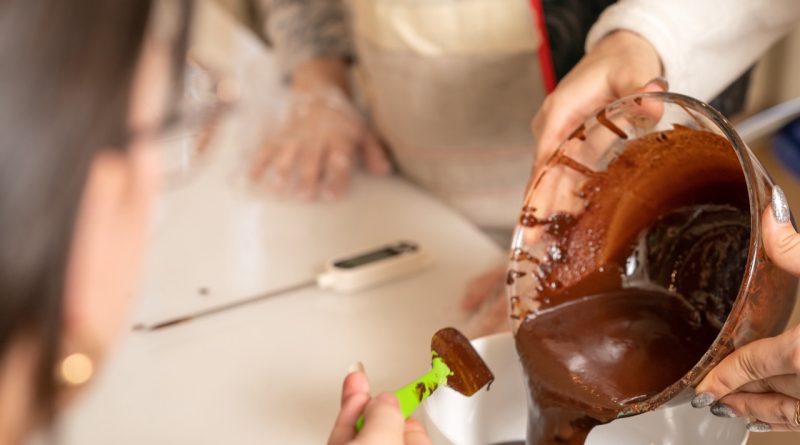Can Sephra Equipment Be Used Internationally
Sephra equipment, renowned for its high-quality chocolate fountains and other food preparation devices, has gained popularity in various culinary settings. As businesses and culinary enthusiasts look to expand their reach internationally, a common question arises: Can Sephra equipment be used abroad? This article explores the compatibility of Sephra equipment with international markets, the key considerations for usage overseas, compliance with safety standards, and practical tips for shipping and utilizing this equipment globally.
Understanding Sephra Equipment and Its Global Compatibility
Sephra equipment, particularly its chocolate fountains, is designed for versatility and ease of use, making it a staple in catering, events, and food service industries. These machines are engineered to meet specific voltage and frequency requirements, typically operating on 120V/60Hz in North America. When considering international use, it’s essential to recognize that many countries operate on different electrical standards, such as 230V/50Hz. This discrepancy can affect the performance and safety of the equipment if not addressed properly.
In addition to voltage and frequency differences, the physical design of Sephra equipment also plays a role in its global compatibility. Many models may have specific attachments or components that can vary by region, which could affect their functionality. As such, understanding the exact specifications and requirements of the equipment is crucial for anyone intending to use it in a different country. Manufacturers often provide detailed information about international compatibility, which should be consulted prior to making any overseas plans.
Lastly, while Sephra equipment is built to be durable and reliable, the conditions under which it is used can differ from one country to another. Factors such as climate, altitude, and local food safety regulations may influence how well the equipment performs. Therefore, it is advisable to conduct thorough research and ensure that the equipment can operate effectively in the intended environment.
Key Considerations for Using Sephra Equipment Abroad
When planning to use Sephra equipment internationally, one of the first considerations is the need for voltage converters or transformers. If you are operating in a country with a different voltage standard, a reliable transformer will be necessary to prevent damage to the equipment. It’s crucial to select a transformer that can handle the wattage of the Sephra unit to ensure safe and efficient operation.
Another important factor is understanding local regulations regarding food equipment. Different countries have distinct health and safety standards that may dictate how food preparation equipment should be used, cleaned, and maintained. Familiarizing yourself with these regulations can help prevent potential legal issues and ensure that your usage aligns with local practices. It may also be beneficial to consult with local food safety authorities or industry professionals who are knowledgeable about these standards.
Additionally, consider the availability of replacement parts and support services in the region you plan to operate. While Sephra may have a strong presence in certain markets, access to replacement parts or technical support may vary in others. Before setting up operations, it is wise to ensure that you can obtain necessary components and assistance should any issues arise during your use of the equipment.
Safety Standards: International Regulations and Compliance
Safety standards for food preparation equipment are paramount, especially when expanding into international markets. Sephra equipment must comply with various regulations, such as those set by the International Electrotechnical Commission (IEC) and local health departments. These standards ensure that the equipment is safe for use and does not pose any hazards to food safety or operator health.
When using Sephra equipment in a different country, it’s essential to verify that it meets the local certification requirements. For instance, equipment used in the European Union must have the CE marking, indicating compliance with EU safety standards. Similarly, in the United States, equipment must adhere to standards set by the Underwriters Laboratories (UL). Ensuring compliance with these certifications not only safeguards users but also builds trust with customers in the new market.
Operators should also be aware of any warranty implications when using Sephra equipment internationally. Manufacturers may have specific guidelines regarding warranty coverage for equipment used outside of its intended market. Understanding these terms can help avoid unexpected costs or complications in the event of equipment failure.
Practical Tips for Shipping and Using Sephra Equipment Globally
Shipping Sephra equipment internationally requires careful planning to avoid damage during transit. It’s advisable to use sturdy packaging materials and consider insuring the shipment. Researching reliable logistics providers experienced in shipping food equipment can also ensure that the items arrive safely and on time. Additionally, familiarize yourself with customs regulations and potential tariffs that may apply when importing equipment into a new country.
Once the equipment arrives, proper installation is critical for optimal performance. Ensure that all components are checked and that the machine is set up according to the manufacturer’s specifications. If operating in a country with different voltage standards, be sure to use the appropriate voltage converter or transformer. Consulting the user manual or seeking professional assistance can help ensure a successful installation.
Lastly, maintaining compliance with local food safety regulations post-installation is vital. Regularly inspect the equipment for wear and tear, and ensure that it is cleaned and maintained according to the guidelines set by both Sephra and local health authorities. This proactive approach not only extends the lifespan of the equipment but also guarantees the safety and satisfaction of your customers.
In conclusion, while Sephra equipment can be used internationally, several factors must be considered to ensure successful operation. Understanding compatibility, local regulations, and safety standards is crucial for any business or individual looking to expand their culinary endeavors overseas. By taking the time to research and prepare adequately, users can enjoy the benefits of Sephra equipment in diverse global markets, enhancing their food service offerings while maintaining high standards of safety and quality.
